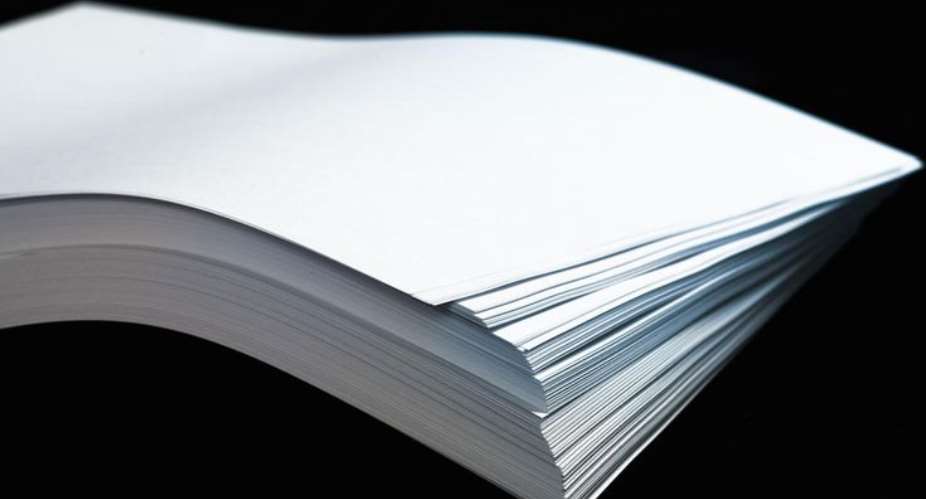Making the right choice or decision with respect to the paper in book production is very beneficial in the long term. Print production plays a major part in the production of physical books. More so, the paper stock is a very essential raw material in the production of physical books. Paper comes in many forms with different qualities, hence, when it comes to book production choosing the right paper is very important.
Unfortunately, paper stock for book production and some other print materials are mostly imported. Each type of paper that is manufactured has its own qualities and characteristics. In the field of print production, some of the common paper stocks are Bond paper, Art paper, Newsprint, Vanguard, Eggshell paper, Manila, Tracing paper, Art card, Chromocote, Chipboards, Strawboard, etc.
In print production, paper stocks have two main categories. These are coated paper stocks and uncoated paper stocks. Coated papers are paper stocks that are coated with a mixture of materials, which make the surfaces of the paper glossy, hence making the display of text and images sharper in detail.
Coated papers have the characteristic of reducing the amount of ink absorption, thereby allowing for denser colors and deeper blacks. It is more difficult to write on coated papers, especially with pencils or ballpoint pens. Papers can be coated on one side or both sides. Coating of papers does not only give a glossy appearance, but it also adds weight, increases opacity as well as surface smoothness.
Uncoated papers, on the other hand, are paper stocks without any surface coating, which make the papers porous, thereby permitting ink to absorb on the papers. Images printed on uncoated papers tend to be softer and less crisp. Uncoated papers contain numerous types with varying textures. With white uncoated paper, more light is reflected back to the eye when the sheet is brighter.
In choosing a paper for book production there are other characteristics or qualities that should be considered. These are weight and thickness (calipers), opacity and paper color. The weight and thickness of a paper is how rugged, bulky and thick a paper is. Papers are usually weighed in stacks of 500 sheets or ream.
The weight of a paper actually affects the thickness of the paper. Grammage (gsm) is the measuring unit for paper weight. For book production in Ghana, it is recommended that the minimum paper weight for book block (main text) should be 70gsm machine-finished woodfree paper like mechanical bond paper. The minimum weight of a book cover should also be 200gsm single-sided coated paper such as Chromocote or Art Card with 25-micron laminate or UV coating. For case binding, straw board or chip should be above 1,100gsm.
Paper opacity is the measure of transparency or how much text or images show through from one side of a paper to the other side. A good paper for book production should have high opacity. For book production in Ghana, it is recommended that opacity of the paper for printing should be at least 90%. A paper that shows nothing from the other side is said to be 100% opaque. On the other hand, if a paper is 0% opaque it is transparent. Furthermore, thicker papers are more durable and possess high opacity though expensive and harder to work with, compared to thinner papers.
Considering the color of papers for book production is very necessary. Papers used in printing books typically come in shades of white. The recommended options of paper colour, for book production, should be bright white, off-white or cream-coloured.
In conclusion, a desirable output with respect to print production could be realized when producers of books make the right choices on the right paper to be used. This calls for adequate knowledge on papers and their use. Among other things, some issues or problems in printing borne out of the choice of paper would be avoided if the right choices are made. Hence, the need for publishers and print producers avoid compromising on the right choice of paper for book production.
Kofi Asante Twumasi
Production Services Manager
Ghana Book Development Council





 Whoever participated in the plunder of the state must be held accountable – Jane...
Whoever participated in the plunder of the state must be held accountable – Jane...
 A vote for John and Jane is a vote to pull Ghana from the precipice of destructi...
A vote for John and Jane is a vote to pull Ghana from the precipice of destructi...
 I’ll repay your abiding confidence with loyalty, understanding and a devotion to...
I’ll repay your abiding confidence with loyalty, understanding and a devotion to...
 ‘I’ve learnt deeply useful lessons for the future' — Serwaa Amihere breaks silen...
‘I’ve learnt deeply useful lessons for the future' — Serwaa Amihere breaks silen...
 I’m sorry for the embarrassment – Serwaa Amihere apologises for leaked sex video
I’m sorry for the embarrassment – Serwaa Amihere apologises for leaked sex video
 Dumsor: Matthew Opoku Prempeh not in charge of Energy sector – Minority
Dumsor: Matthew Opoku Prempeh not in charge of Energy sector – Minority
 Adu Boahen’s murder: Police arrest house help who was in possession of deceased’...
Adu Boahen’s murder: Police arrest house help who was in possession of deceased’...
 Akufo-Addo nominates Felicia Attipoe as Tema West MCE
Akufo-Addo nominates Felicia Attipoe as Tema West MCE
 Election 2024: I can't have someone I defeated twice as my successor – Akufo-Add...
Election 2024: I can't have someone I defeated twice as my successor – Akufo-Add...
